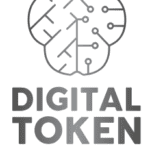In the digital age, access to information on the web is more critical than ever. However, for many people in developing markets, barriers to accessing online content can be significant. To address this issue, Google has introduced a text-to-speech feature aimed at making the web more accessible to users in these regions. Let’s explore how this innovation can transform the online experience for millions.
Bridging the Accessibility Gap
To set the stage, the digital divide is a global challenge, and accessibility to the web is a major aspect of this issue. Many users in developing markets may not have access to devices with advanced screen-reading capabilities or may face language barriers. Google’s text-to-speech feature is designed to bridge these accessibility gaps.
Transforming Text to Speech
The heart of this innovation lies in its ability to transform written text into spoken words. Users can simply select the text they want to hear, and the text-to-speech feature converts it into audio. This provides an auditory interface, enabling users to consume online content even if they have limited reading skills or prefer audio-based information.
Multilingual Support
One of the key advantages of this feature is its multilingual support. It can read content in a variety of languages, making it a valuable tool for users in diverse regions. This feature’s flexibility is a testament to Google’s commitment to inclusivity and its recognition of the global nature of the web.
Impact on Education
The implications of this innovation extend to education. In regions where access to educational resources is limited, the text-to-speech feature can be a game-changer. It allows students to access online educational content, textbooks, and resources with greater ease, potentially narrowing the educational gap.
Empowering Communities
Moreover, this initiative empowers communities to access crucial information online. It’s not just about convenience; it’s about giving people the tools to access critical information, stay informed, and participate in the digital age. The impact reaches beyond individuals to entire communities and regions.
Google’s Commitment
It reflects the company’s commitment to its mission of making the world’s information universally accessible. By addressing the unique challenges faced by users in developing markets, Google’s innovation paves the way for a more inclusive digital future.
As this technology continues to evolve and expand its reach, it has the potential to transform the way people in developing markets access and interact with online content. A reminder of the positive impact technology can have in bridging the global digital divide.



2 comments
[…] of the “Fear of Missing Out” (FOMO) phenomenon. By making content temporary, Instagram sparked curiosity and encouraged users to check ‘Stories’ regularly so they wouldn’t miss out on […]
[…] in drones produced by Parrot. These vulnerabilities could potentially allow malicious actors to take control of the drones or access sensitive data stored on the devices. The revelation was a stark reminder […]